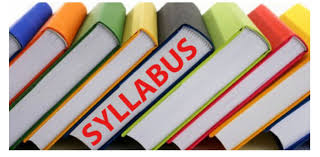Waec Syllabus On Store Management 2025/2026
The Waec Syllabus On Store Management 2025/2026 is crucial for students who have selected storekeeping as one of their WAEC subjects. Storekeeping benefits careers in supply chain operations, inventory control, and logistics.
The purpose of this subject’s exam is to assess your:
- i. Knowledge and admiration of storekeeping, fundamental ideas, and store design and organization.
- ii. Knowledge of the purposes of warehousing and storekeeping.
- iii. The capacity to connect ideas to inventory control and management.
You can concentrate on the most important topics and ensure you don’t miss anything by following the syllabus below. You will perform even better when you practice previous questions because you will become accustomed to the format and types of questions on the test.
- READ ALSO:
- WAEC Expo 2025/2026- News & Important Update
- What is the Difference Between WAEC and WASSCE?
Contents
PREAMBLE
The syllabus is designed to assess the candidates’ basic knowledge of management and customer satisfaction and their understanding of entrepreneurial skills in managing a small or large store.
AIM AND OBJECTIVES
The examination, therefore, intends to test candidates
(i) understanding of the rudiments of running a store and entrepreneurial skills.
(ii) understanding of the concepts of wholesaling and retailing, basic business documents, and how to handle business finance.
(iii) ability to relate concepts learnt to control stock, keep records, and manage business risk.
SCHEME OF EXAMINATION
There will be two papers, Paper 1 and Paper 2, which will be combined in a composite paperand taken at one sitting.
Paper 1:
It will consist of fifty multiple-choice questions, which will last for 1 hour and carry 50 marks.
Paper 2:
It will consist of seven essay questions, out of which candidates will be required to answer any five in 2 hours for 100 marks.
WAEC SYLLABUS ON STORE MANAGEMENT 2025/2026
| S/N | TOPICS | NOTES |
|---|---|---|
| 1. | Introduction to StoreManagement | 1.1 Store Management: (i) Meaning of store management; (ii) Importance of store management; (iii) Functions of a store manager; (iv) Characteristics of a store manager; (v) Customer services: ‐ pre sale services ‐ after sale services 1.2 Functions of Management: (i) Planning; (ii) Organization; (iii) Leading; (iv) Staffing; (v) Controlling. 1.3 Factors to be considered in establishing a store – Market,Finance, types of stock, transport, accessibility, security,government regulation and personel. |
| 2. | Concepts of retailingand wholesaling. | 2.1 Retailing: (i) Definition; (ii) Functions of a retailer; 2.2 Wholesaling: (i) Definition; (ii) Functions of a wholesaler; 2.3 Warehousing; ‐ Meaning of warehousing ‐ types of warehousing; ‐ importance of warehousing; 2.4 Transportation: ‐ definition; ‐ means of transportation; ‐ advantages and disadvantages of each means oftransportation; ‐ factors that will determine the choice of transport. |
| 3. | Stock Control | 3.1 Introduction to Stock Control: (i) Meaning of stock control; (ii) Importance of stock control; (iii) Types of stock records‐Stock list, Bin card/ StoreCard, Store requisition form and Delivery notes. 3.2 Methods of Stock Control: (i) Manual method; ‐ Periodic, perpetual and annual stock taking. (ii) Computerized method; (iii) Levels of stock control; ‐ maximum level. ‐ minimum level. ‐ reorder level. (iv) Issuing of stock: ‐ FIFO and LIFO. 3.3 Pricing: (i) Definition of pricing; (ii) Types of pricing; ‐ skimming ‐ mark‐up ‐ mark‐down ‐ penetration ‐ below or above mark pricing |
| 4. | Organizational policy | 4.1 Organizational Policy: (i) Definition; (ii) Employment policy; (iii) Decision; ‐ customer services ‐ public relations 4.2 Organizational Standards: (i) Definition of standards; (ii) Productivity standards; (iii) Standard for customer’s satisfaction. 4.3 Organizational Culture: (i) Definition of culture; (ii) Explanation of organizational culture; ‐ attitude to customers ‐ relationship with co‐workers ‐ relationship with the Boss ‐ dress code |
| 5. | BusinessCommunication | 5.1 Overview of Communication: (i) Definition of communication; (ii) Types of communication; ‐ oral, written and non‐verbal. (iii) Business documents; ‐ letters, memos, reports and circulars. 5.2 Electronic Communication: (i) Definition of communication; (ii) Means of communication ‐ fax, telephone, email, radio messages. (iii) Word Processing – Using computer to write businessletter. |
| 6. | Business Law | 6.1 Overview of Basic Business Law: ‐ definition. 6.2 Law of contract: ‐ elements of contract. ‐ Rights and obligations of employer and employee. 6.3 Agency: (i) Definition; (ii) Types of agents; (iii) Creation of agency; Rights and obligations of principals/agents 6.4 Sale of Goods Act: (i) Contract of sale; (ii) Formalities of sale; 6.5 Government Regulation of Business: Meaning and uses of : (i) Patent right; (ii) Copy right; (iii) Trade mark. (i) Health and Safety at Work Act. (ii) Consumer protection agency (iii) License 6.6 Government Regulatory Agencies: ‐ NAFDAC, NDLEA, SON |
| 7. | Record Keeping | 6.1 Overview of Basic Business Law: ‐ definition. 6.2 Law of contract: ‐ elements of contract. ‐ Rights and obligations of employer and employee. 6.3 Agency: (i) Definition; (ii) Types of agents; (iii) Creation of agency; Rights and obligations of principals/agents 6.4 Sale of Goods Act: (i) Contract of sale; (ii) Formalities of sale; 6.5 Government Regulation of Business: Meaning and uses of : (i) Patent right; (ii) Copy right; (iii) Trade mark. (i) Health and Safety at Work Act. (ii) Consumer protection agency (iii) License 6.6 Government Regulatory Agencies: – NAFDAC, NDLEA, SON |
| 8. | Book Keeping | 7.1 Documentation: (i) Definition of filing and indexing; (ii) Rules of filing; (iii) Filing and indexing method. 7.2 Source document: (i) Meaning; (ii) Types. ‐ Invoice, receipts, cheques, vouchers 7.3 Trade Documents: (i) Documents used in foreign trade; Bills of Lading, Certificate of Origin, Consular invoice,Insurance certificate, inspection certificate, Bill of Exchange,Indent, Letter of Credit, Proforma invoice (ii) Documents used in home trade.Order, Enquiry, Waybill, Consignment note, Manifest, invoice, proforma invoice Receipts, Credit and Debit note, Vouchers |
| 9. | Risk Management | Risk Management: (i) Definition; (ii) Methods of risk management. ‐ Sound management practices ‐ Reduction of risks – optimum stock level ‐ Hedging Risk transfer through insurance |
| 10. | Handling Finances ofthe Store | 8.1 Subsidiary Books. ‐ Meaning, Types, Uses, Purchase and Sales day book,Returns outwards/inwards books, Cash books. 8.2 Imprest System: (i) Definition and description of the imprest system; (ii) Preparation of petty cash book. 8.3 Final Accounts: (i) Definition and purpose; (iii) Simple Trading, Profit and Loss Account, and Balancesheet. 8.4 Sales / Turnover: (i) Meaning; (ii) Calculation of rate of sales turnover. |

